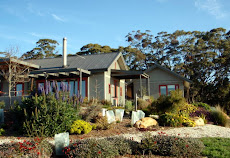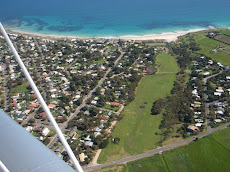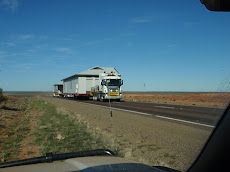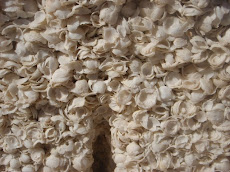 Plant life in Western Australia particularly is very varied and beautiful, especially now that the spring wildflower season has started, so I thought it time to regale my botanically minded (thinking of you Jen K), and Landcare friends with some of the treats we have seen. My interest has been growing since the beginning – starting with the mallee, mulga and saltbush of the dry country of Mungo NP and Broken Hill, then the drought-stricken Flinders Ranges with Red Gums in the dry river and creek beds. Central Northern Territory’s desert with the marvellous Desert Park of Alice Springs was followed by the wet tropics of Kakadu and Darwin and the Kimberley with its characteristic savannah of grass/wood-lands and boab trees. Dampier Peninsula’s 3-layered pindan sand plains (acacias, smaller trees and shrubs, and spinifex), contrasted with the arid tropics of the ore-rich Pilbara region, and coastal and scrub heaths of Ningaloo/Cape Range, Shark Bay and Kalbarri. My fond hope is that the current rain will reach the Great Victoria Desert to enable a wildflower display for our homeward traverse along the remote 1300km Anne Beadell track. It comes out at Coober Pedy in SA. There are many steep learning curves this novice has barely begun to negotiate – geology, climate, landform just for starters. The debate about burning and fire management is another story. An extra challenge is understanding changing nomenclature and taxonomy (eg Bloodwoods and Ghost Gums are now Corymbias not Eucalypts). Traditional uses of indigenous plants for food and medicine is a fascinating topic, complicated by the Aboriginal names of plants which of course change depending on the language group. I found a booklet written by Aboriginal people at Lombardina about the plants used by Bardi people of the Dampier Peninsula in West Kimberley called Boonya bardag gorna – all trees are good for something. There are many others.
Plant life in Western Australia particularly is very varied and beautiful, especially now that the spring wildflower season has started, so I thought it time to regale my botanically minded (thinking of you Jen K), and Landcare friends with some of the treats we have seen. My interest has been growing since the beginning – starting with the mallee, mulga and saltbush of the dry country of Mungo NP and Broken Hill, then the drought-stricken Flinders Ranges with Red Gums in the dry river and creek beds. Central Northern Territory’s desert with the marvellous Desert Park of Alice Springs was followed by the wet tropics of Kakadu and Darwin and the Kimberley with its characteristic savannah of grass/wood-lands and boab trees. Dampier Peninsula’s 3-layered pindan sand plains (acacias, smaller trees and shrubs, and spinifex), contrasted with the arid tropics of the ore-rich Pilbara region, and coastal and scrub heaths of Ningaloo/Cape Range, Shark Bay and Kalbarri. My fond hope is that the current rain will reach the Great Victoria Desert to enable a wildflower display for our homeward traverse along the remote 1300km Anne Beadell track. It comes out at Coober Pedy in SA. There are many steep learning curves this novice has barely begun to negotiate – geology, climate, landform just for starters. The debate about burning and fire management is another story. An extra challenge is understanding changing nomenclature and taxonomy (eg Bloodwoods and Ghost Gums are now Corymbias not Eucalypts). Traditional uses of indigenous plants for food and medicine is a fascinating topic, complicated by the Aboriginal names of plants which of course change depending on the language group. I found a booklet written by Aboriginal people at Lombardina about the plants used by Bardi people of the Dampier Peninsula in West Kimberley called Boonya bardag gorna – all trees are good for something. There are many others.I have persuaded Ian to try a few botanical walks; these are far fewer than gorge treks. Walks have become very stop-start affairs for me as I stop to take photos or che
Since then Annie has been showing us the many delights in the sand plains around Geraldton. The nature reserves and roadside are veritable wild gardens which after a week of rain are bursting with new seedlings and flowers. She has demonstrated the patienceof Jove in helping me identify and label them.
PS Having left Geraldon we have travelled through the Murchison Goldfields area and back into Mulga and Spinifex country, seeing the first fields of daisies after years of drought at Thundelarra Station.
My plant snaps with captions are up at http://picasaweb.google.com/helenscott0/HelenSPlantAlbum
As my photography skills are at best marginal you may be interested in further sites like WA’s FloraBase http://florabase.calm.wa.gov.au/ - especially for identification
http://www.wildflowerswa.com - tourist guide to the what and where of WA’s 12,000 species.

















































































































No comments:
Post a Comment